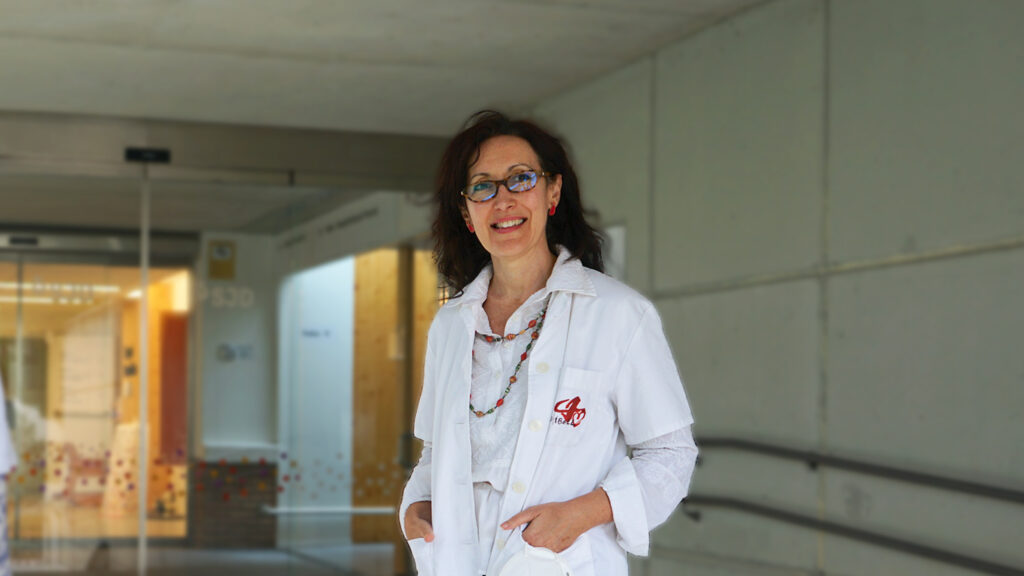In Spain there are more than 3 million people with rare diseases, being a social health problem of the first magnitude. Adrenoleukodystrophy (X-ALD) is one of them and is characterized by a loss of myelin in the brain and spinal cord, a vital substance for the conduction of electrical impulses between neurons.
The IDIBELL Neurometabolic Diseases Group, led by ICREA professor Aurora Pujol, also geneticist and group leader of the Center for Biomedical Research in Network for Rare Diseases (CIBERER), plans to start a new clinical trial in early 2022 with the anti-inflammatory drug dimethyl fumarate with male patients with adrenomyeloneuropathy, the adult form of X-ALD, and symptomatic female carriers, aged 18 to 65 years.
This study, in which Dr. Carlos Casasnovas, coordinator of Rare Muscular Diseases CSUR of the Bellvitge University Hospital, also participates, will be carried out thanks to the funding obtained in the call for independent clinical research from the Carlos III Health Institute. This is a multicenter trial with the participation of the aforementioned Bellvitge University Hospital, Dr Adolfo López de Munain from the Donostia University Hospital and Dr. Montserrat Morales from the 12 de Octubre University Hospital in Madrid.
About adrenoleukodystrophy
Adrenoleukodystrophy is a neurometabolic disorder that has one in every 17,000 inhabitants whose cause is genetic and more specifically the loss of function of the ABCD1 protein. It mostly affects men, although some female carriers may have milder forms of the disease. This condition causes the accumulation of a type of saturated fatty acids, especially in the nervous system and in the adrenal glands, with destruction of the myelin sheath, the envelope of the axons that allows the correct flow of nervous information.
Likewise, there are different variants of this disease with different degrees of severity. The most serious, childhood brain X-ALD, affects only children and is associated with behavioral disorders such as inattention or hyperactivity. The disease, which is degenerative, destroys brain myelin in an acute inflammatory process that kills children between the ages of five and ten. In the second form, adrenomyeloneuropathy, symptoms appear between the ages of 20 and 40, and patients have stiffness and spasticity in the legs, progressing slowly and eventually affecting their ability to walk.
A disease without treatment
In brain forms, only bone marrow transplantation is effective, associated with high mortality and clinical problems and is only recommended in almost asymptomatic children, and gene therapy, in a narrow therapeutic window that leaves most of the patients untreated. On the other hand, there is also no treatment for the majority form: adult adrenomyeloneuropathy. For this reason, there is a need to develop new studies that lead to the approval of new therapeutic strategies.
In this sense, in recent years, the team of scientists led by Dr. Pujol has carried out massive data analysis studies (multiomics) in samples of the mouse model of the disease and patients and has identified various metabolic pathways involved in the origin and evolution of the disease. Specifically, they recently published that there is an inhibition of the NRF-2 pathway in X-ALD and that oral administration of an activator of this pathway, dimethyl fumarate, prevented neurodegeneration in the mouse model.
Dimethyl fumarate is a first-line treatment for multiple sclerosis, and with these preclinical results, its orphan drug designation for X-ALD was obtained, a preliminary step towards the clinical trials with this molecule in these patients.
Collaboration with ELA-Spain
To carry out this project, the team of researchers has the collaboration of the Spanish Association against Leukodystrophies (ELA-Spain), which will help recruit people potentially interested in participating in this trial.
Since its creation in 2001, ELA-Spain has worked to promote research and help families cope with the disease. The association is highly integrated in the Spanish and European ecosystem of rare diseases; they inform patients and their families about the disease and the results of current research, promoting annual meetings of scientists, clinicians, and families.
The Bellvitge Biomedical Research Institute (IDIBELL) is a biomedical research center created in 2004. It is participated by the Bellvitge University Hospital and the Viladecans Hospital of the Catalan Institute of Health, the Catalan Institute of Oncology, the University of Barcelona and the City Council of L’Hospitalet de Llobregat.
IDIBELL is a member of the Campus of International Excellence of the University of Barcelona HUBc and is part of the CERCA institution of the Generalitat de Catalunya. In 2009 it became one of the first five Spanish research centers accredited as a health research institute by the Carlos III Health Institute. In addition, it is part of the “HR Excellence in Research” program of the European Union and is a member of EATRIS and REGIC. Since 2018, IDIBELL has been an Accredited Center of the AECC Scientific Foundation (FCAECC).

